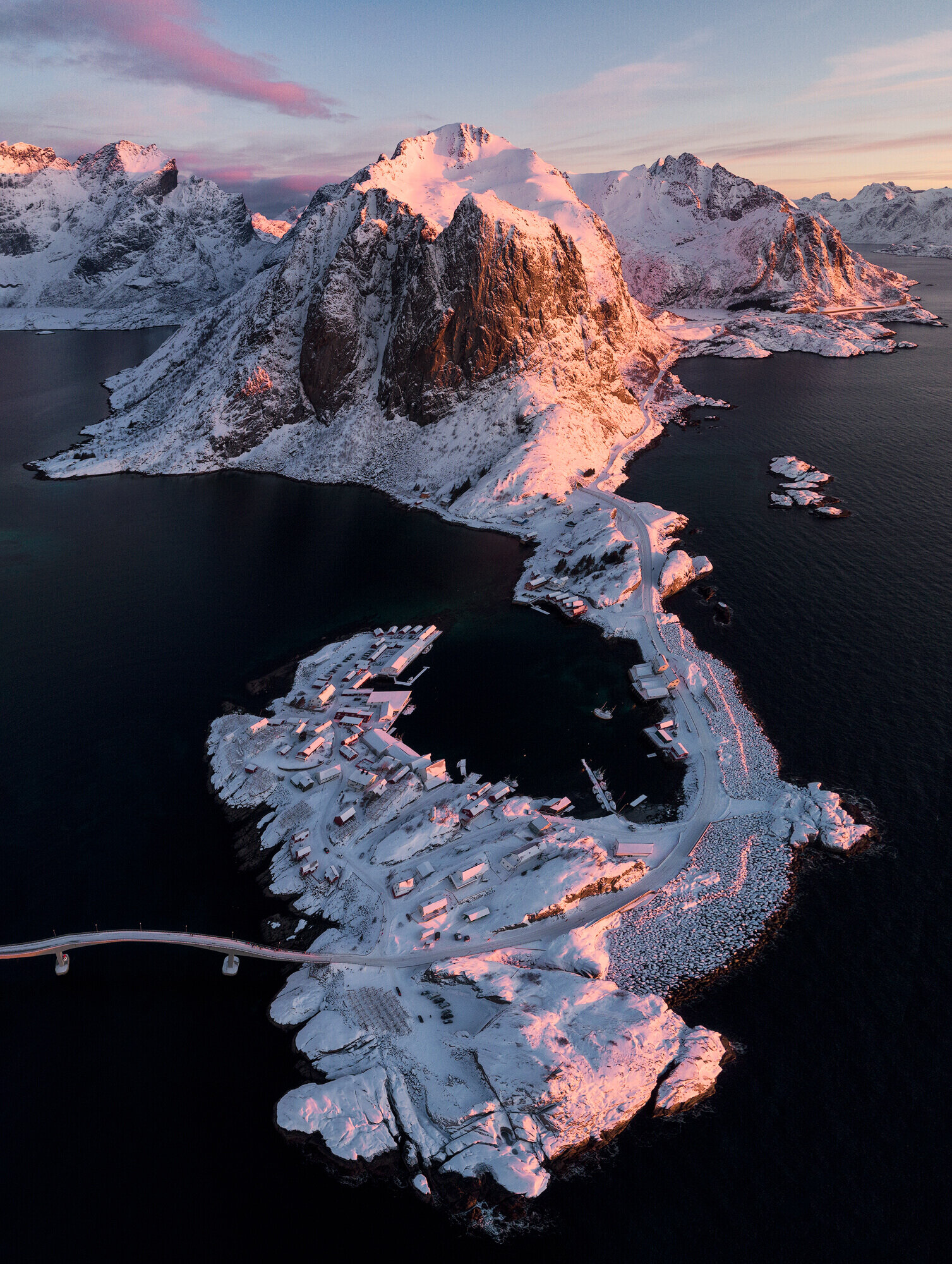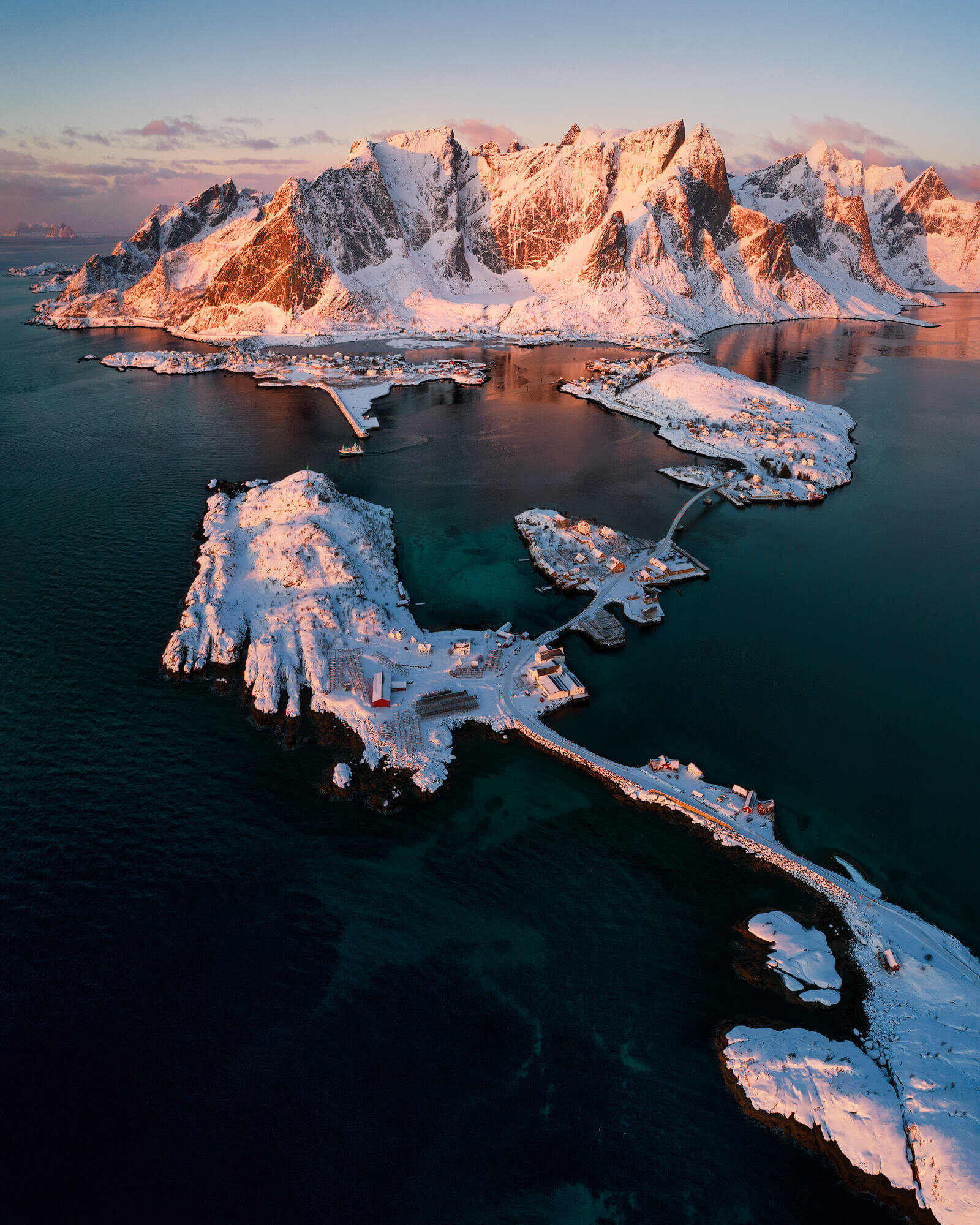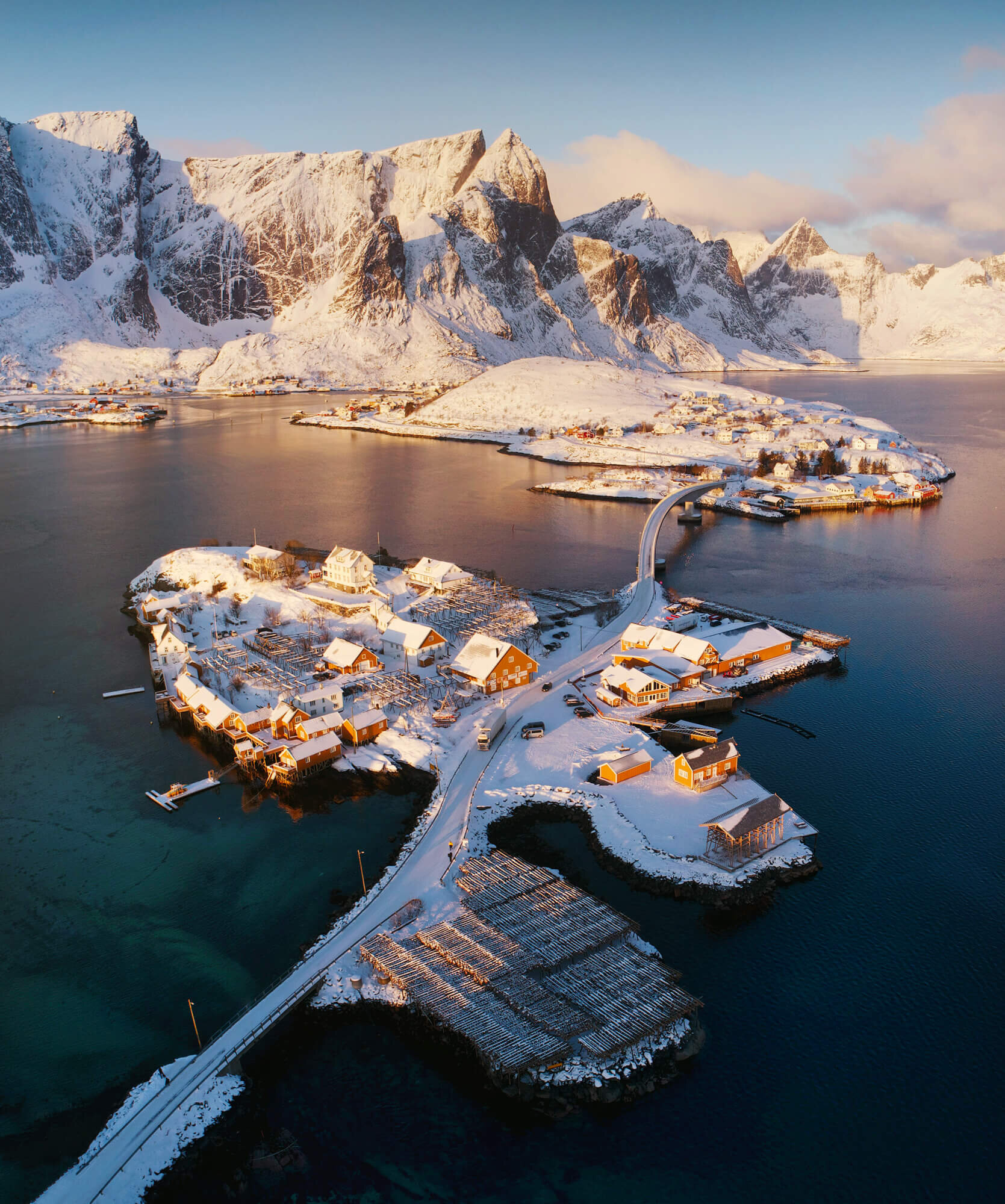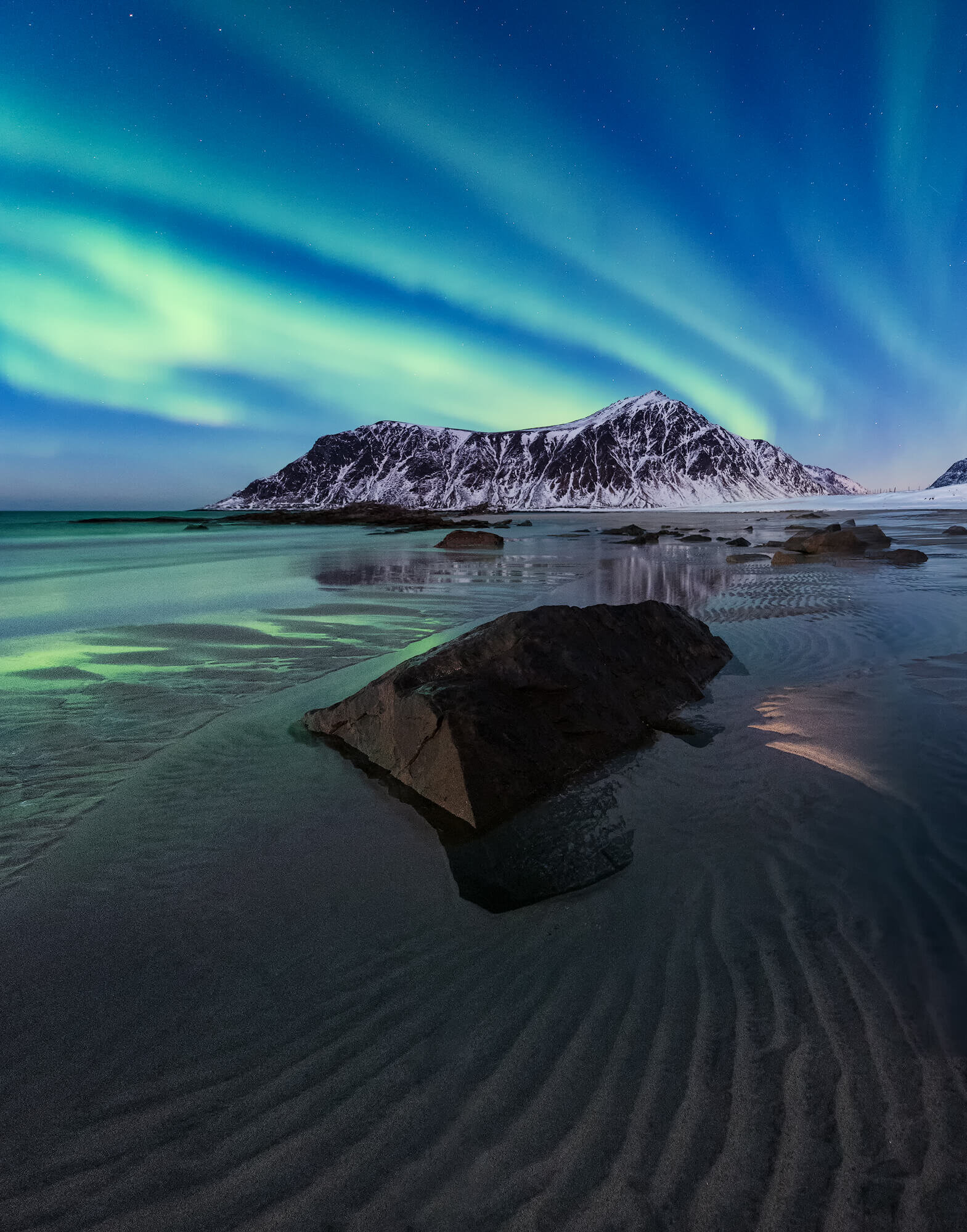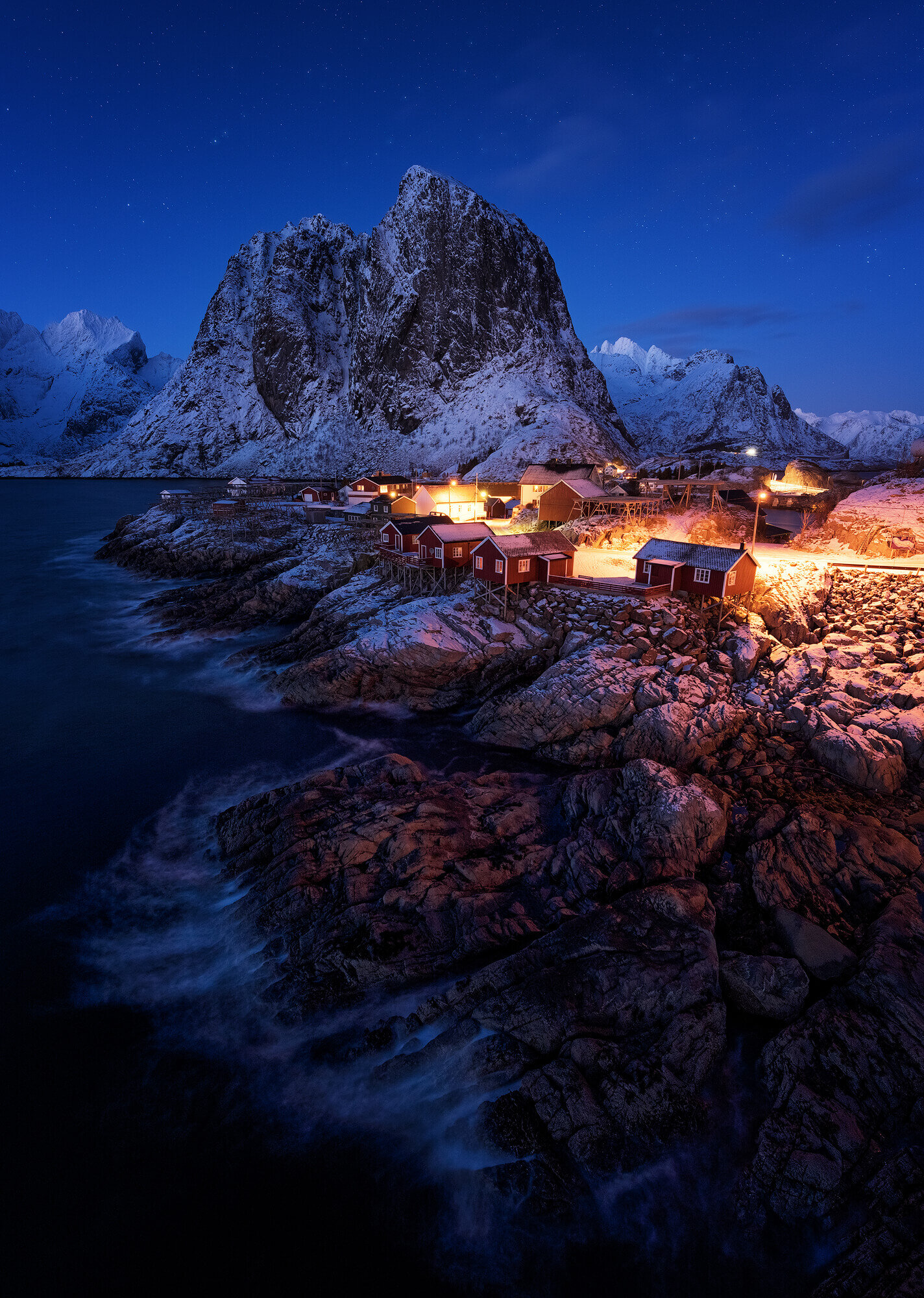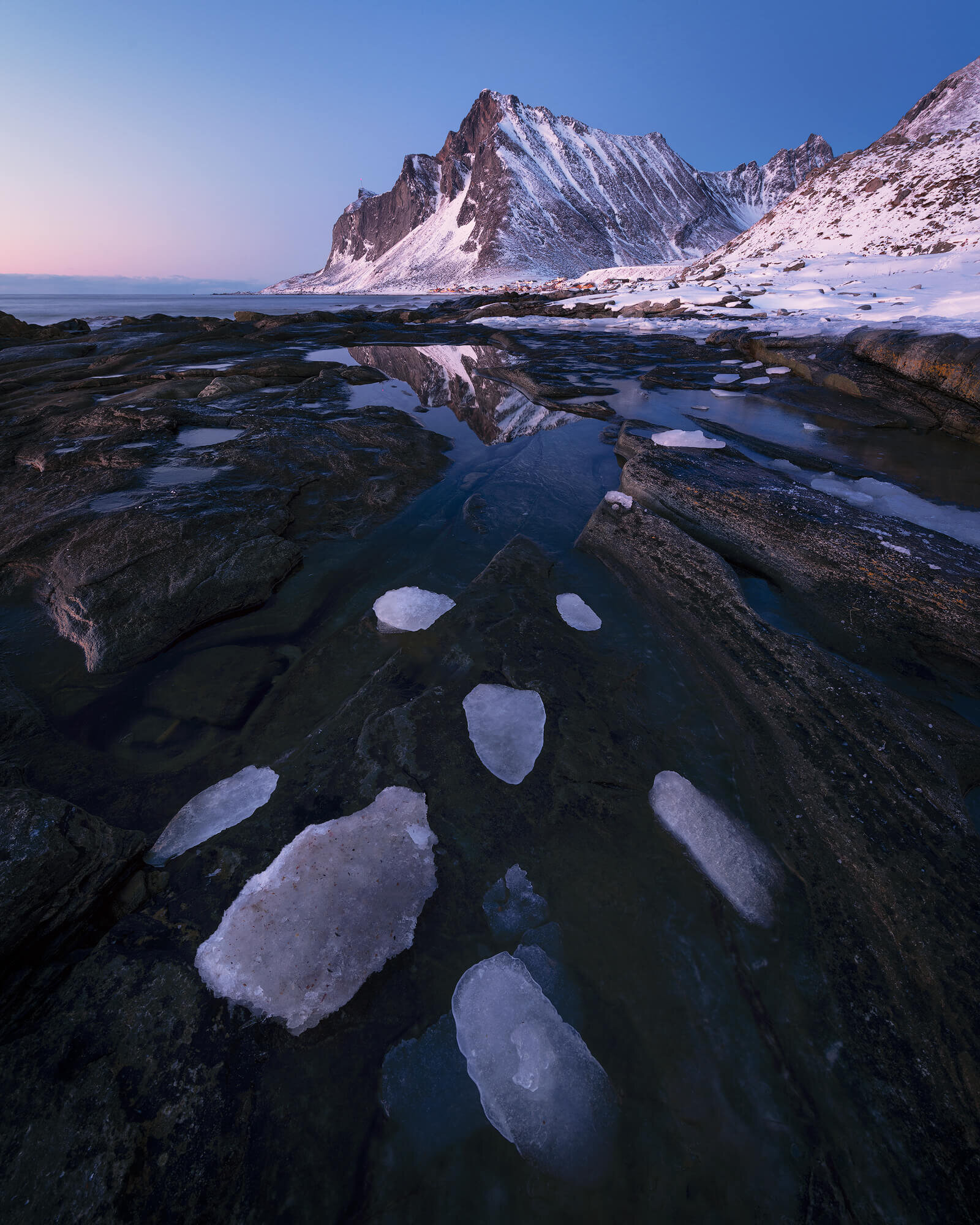Tips for making the most of your landscape photography trip to Lofoten islands in winter
The Lofoten islands are among the finest locations for winter photography that we can find on this planet in my opinion. And a quick google image search will make you realize that i am not alone with this feeling. Let´s face it, nowadays this archipelago in northern Norway has become one of the absolute top locations for landscape photography on a global basis in any season of the year. But i personally think that winter is potentially the season where the most amazing settings take part. And that not only because of the elusive Aurora borealis aka the northern lights. It´s the epitome of the beauty of winter that awaits you…
Learn how to prepare for a winter trip to Lofoten islands in NOrway in this article
I have been shooting landscape photography on Lofoten islands every winter since 2012. And during all these trips i met people that had absolutely false expectations and were not prepared enough for what was awaiting them. And therefore left without the imagery they had been dreaming of. In this blog post i will share some important tips with you on how to prevent this and make your trip one of those that you never forget in your life.
From clothing that you should bring over tips on how to safely drive on the wintery roads- i got you covered!
What i mean with false expectations, bad informations and the results that people run into during their trips to Lofoten islands is basically that these islands in the north of Norway greet the visitor with some features that not everyone is aware of.
While the Lofoten archipelago is located around 68° North and therefore very high up in the north, it is also very close to the gulf stream. This makes the temperatures durng winter time rather high compared to places at similar latitudes that are not close to the gulf stream. But… this also makes the weather incredibly unpredictable, cloudy and rainy. Clouds and rain don´t really go hand in hand with a location that everyone calls the perfect base to photograph the Aurora borealis right?!
Check out my article on how to master Aurora borealis in landscape photography: Click here
Here in these images you can see why Lofoten islands got so popular among photographers during winter time. They are a feast for the eyes!
Hold on and read on guys, we´ll get to the explanation of what you should keep in mind to make sure you enjoy our trip!
Prepare for the worst weather ever
No. I don´t hope that you will have only the worst weather ever, but realistically you might have to endure quite some wind, rain, hail, sleet, snowstorms in order to get that amazing winter light which Lofoten islands are so famous for. Instead of looking like a winter paradise all winter long, the special weather patterns of Lofoten islands make these moments of full snow coverage from coast to the peaks quite a rare happening. And many people don´t even get to experience the winter magic during their trips.
When the weather is bad in winter, the temperatures linger around 5 °C and the wind is very strong.When it´s not simply incredibly stormy with heavy wind gusts all over the place. The loads of precipitation will fall as rain. Unfortunately this is not only uncomfortable when not prepared well, but this also washes away all the gorgeous snow. When this happens, the Lofoten islands look quite barren and muddy. Still beautyful of course, but not what you came for from the other end of the world in winter, right?!
Long story short: Bring the right clothing and prepare for cold and wet weather combined with strong wind. The windchill is what makes even 5°C feel very cold. But we will end this tip with something very positive: The fast shifting weather of Lofoten islands is exactly what creates the amazing light scenarios and those who endure through a good storm will be greated with some remarkeably beautyful colorful light. One single big snow storm can totally transform the islands all of a sudden. The ground covered in fresh snow from the ocean to the highest peak. The temperature dropping below zero and the fjords and little bays starting to freeze over. The night suddenly clearing with amazing northern lights straight overhead… those who endure will be in for a treat!
Recommended clothing (these are affiliate links where i will earn a little commission when you purchase through them- no added cost for you)
Some good gloves suitable for photography (Vallerret recommended)
Beany and Balaclava if you easily feel frozen in strong wind
Choose a well located accomodation
When i did my first photography trips to the Lofoten islands many years ago, accomodations were rather scarce. But things have changed quite a lot- nowadays you find a big variation of accomodations. From hotels over hostels to fantastic fisherman cottages called Rorbuer. Back in the early days of people living on the Lofoten islands, the rorbuer were the only shelters fishermen had to take a rest after a long day on the sea- or to hide for some days while one of the many storm system passes the archipelago. While i am not against hotel stays in general, for Lofoten i can only recommend you to book a cosy fisherman cottage. You can find them spread around the whole archipelago- and they come in different price categories. You can find very basic ones, but also very stylish ones. Just google for Rorbuer Lofoten and you will find many. It is smart to keep in mind the respective location of the cabins while looking for one. I personally love to stay in the area around Ballstad. Beeing based “in the middle” of Lofoten islands is very practical as you can adjust to the quickly shifting weather on the fly with ease. Driving times to some of the most popular areas range from 20 minutes to the fantastic beaches Hauklandstranda and Uttakleiv to around one hour to Reine, Hamnoy and all that good stuff. Shopping is very nice in Leknes which is just around the corner and on top you have an airport and car rental facilities.
Besides the great driving distance to the top photography destinations, you don´t even need to leave the are to find great photo and hiking ops. Just behind Ballstad you find the Skottinden range, which is photogenic and very nice for hiking and climbing combined. Don´t be afraid to sleep in- you will still manage to get some nice shots…
My personal choice has become the well known Hattvika Lodge in Ballstad. Hattvika is simply the most cosy and well cared for Rorbu place on the islands. Run by the team around Kristian Bøe you can feel their passion throughout the careful design choices and when interacting with them you really feel the amazing hospitality of the northern Norwegians. Besides top notch cabins, you get access to a wide array of guided outdoor activities and one of the best restaurants in a big radius. There´s even a sauna with glass roof on the pier and if you wanted to enjoy the northern lights with your darling while sitting in a jacuzzi, they got you covered too!
Bring enough time to score good conditions
It´s definitly not a good idea to plan your trip for a very short amount of time. I get it, Lofoten islands are very expensive and your vacation time is precious.. But when traveling around the whole world for a good winter landscape photography experience- why not making sure to maximize the photography crops by staying as long as possible?!
As mentioned earlier, the weather changes very rapidly. But even then, if you come only for 4 days this very often means you will have just horrible weather. No Aurora borealis to see at night when the cloud coverage is 100km thick… I know many friends and photographers who had exactly this happening. It hurts to see them leave without those images they dreamed of.
Actually i have driven people to the airport after a horrible week, only to be treated with a wonderful snowy landscape that was created by a big snowstorm only after they left. In oder to prevent this, plan AT LEAST with 7 days. Much better even if you come for around 14 days. This is the length of a normal trip for me and with this approach in can say that i have had great shooting ops of the northern lights, amazing light shows and also some very moody and dramatic winter storm scenes on every single one of my winter trips (100% Aurora borealis score also on the phototours i have guided). A good idea is to look for local operators of phototours if you want to save yourself a lot of trouble and maximize your experience. I recommend Lofotentours and i am one of their guides.
But if you can only come for 4 days… do it. Everything is possible- especially on Lofoten islands!
Stay safe while driving and dont be stupid
This might sound drastical. But it is important to say in my opinion. The stuff that i have seen in the past is some times really mind boggling. Every rental in northern Norway will be delivered with spiked tires.
You should know that the roads up threre don´t really get cleaned from snow as in “the snow will be removed from the road and only concrete will be left”. Instead the great folks from the road plowing services condense the snow into a thick cap of ice which is on the road most of the time. With the studded tires, driving on this ice surface is a piece of cake during cold weather conditions. The grip is great and it doesn´t feel unsafe at all. When the weather get´s warmer, things start getting a little bit more uncomfortable and the tendency to be very slippery increases. The worst is when it starts raining and slushing on the frozen roads. It is mandatory to adjust your driving speeds when this happens as it is super easy to get off the road!
Did you know that the car towing services are basically booked the whole day in recent years because of tourists that ignore the warnings about these roads and keep speeding through narrow curves like Michael Schumacher?
This is what i mean with stupid. Just. Drive. Slow. And don´t park in the middle of the road to take a picture. Everybody will thank you, especially the locals that might be on their way to workd and don´t want to be stuck in the next accident.
Watch out with the big trucks, they often drive like crazy- when you want them to pass you, use the blinker and stay towards the side of the road. Do this with the locals too.
Just let them move on and do your thing. Stay safe- it´s not worth it to risk your life just because you feel like in a rush.
And the light lasts forever in winter up there anyways.
Be flexible when it comes to Aurora Borealis
To not make this article way too long i will close this one with one last tip: Chase the Aurora when it´s possible- sleep later!
Somewhere in this article i mentioned that i have a 100% northern lights shooting score on all my personal and workshop related trips to the Lofoten islands in all these years. And that´s the truth- but only because i always keep monitoring the weather and the solar activity. If we are lucky, we have an early Aurora show that will fire up just after sunset, as soon as the sky is dark enough. But very often, either the solar wind arrives quite late or the cloud layers just break late in the night. During hours where normally no one will be out chasing. Often these people then complain about not having got any northern lights images during their stay. While i had several of them during the same time frame.
So if you really want to make sure to get a glimpse of that good green stuff in the night sky, just be flexible enough to skip a nights sleep.
You can still sleep on your flight back home, huh?!
An tidal pool on Flakstadoy that is just amazingly beautyful with the white sand on those rocks making it look like it came out of a fairytale
I could write on for hours about this topic and give you many more useful tips. And i will do that. In another article very soon.
In the meantime i would appreciate it if you sign up to my newsletter- i will never be spammy and focus on delivering useful content for you guys instead!
